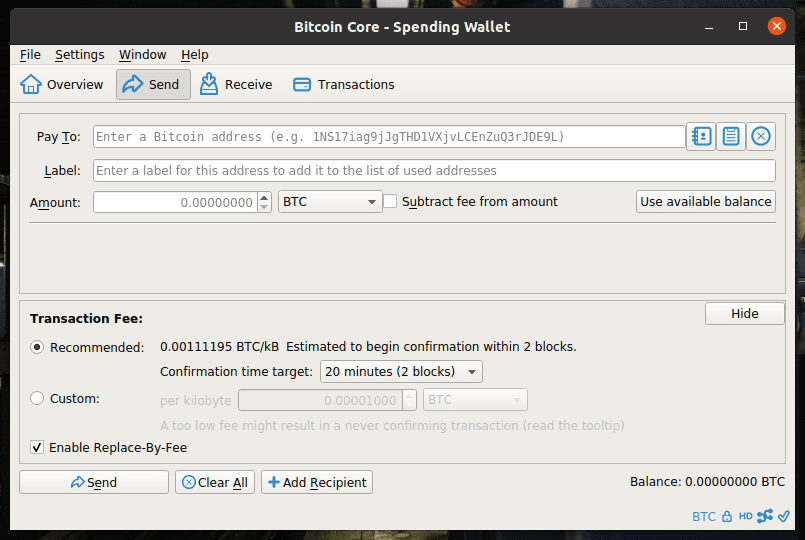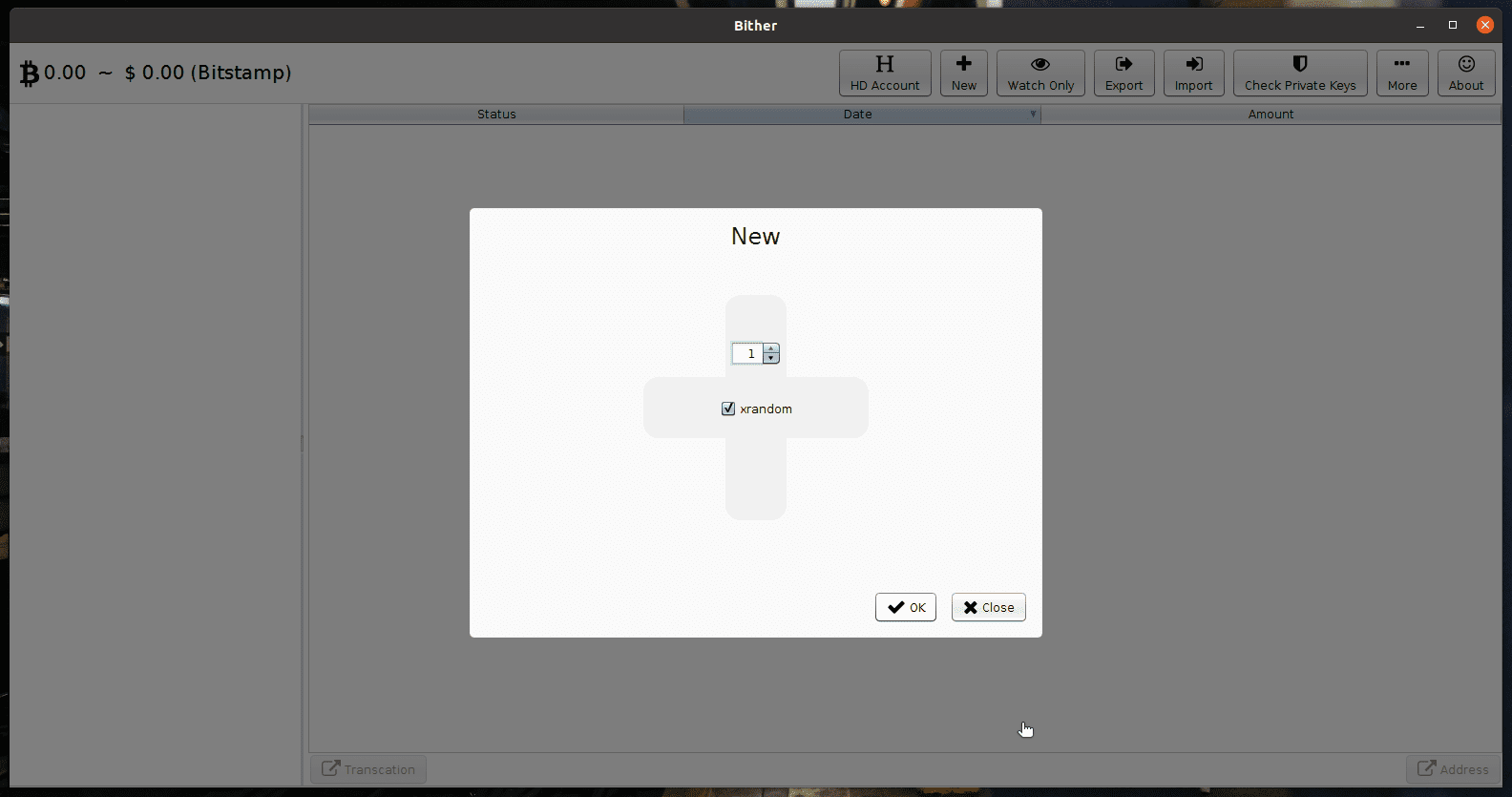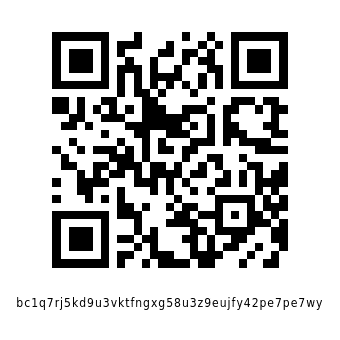By Nicholas Brown – Follow me on Twitter.
- A Primer.
- How To Create A New Bitcoin Wallet (safely).
- How To Send Bitcoins.
- How To Receive Bitcoins.
- How To Create A Bitcoin Wallet Without Downloading The Blockchain.
- Creating a Bitcoin wallet on an exchange.
- Create a mobile wallet.
A Primer
Bitcoin may present somewhat of a learning curve for people whom are not familiar with the concept of cryptocurrency. However, the only reason for this is the fact that it works differently from the banking system — which is complex in its own right.
A Bitcoin wallet is simply a set of cryptographic keys, one of which enables you to authorize outgoing transactions from your wallet. This is called your private key. Your private key is stored on your computer (or your phone if it is a mobile wallet). Never send anyone your private key. There is no reason to, and it provides thieves with the ability to steal your coins.
Your Bitcoins are stored on Bitcoin’s blockchain, which is a distributed ledger stored on and maintained by thousands of nodes around the world. Everyone’s Bitcoin transactions are stored on that blockchain. Nodes run the Bitcoin Core software (app), which is the official Bitcoin wallet. Bitcoin Core downloads a copy of the blockchain to your computer (over 400 GB of disk space required).
This app is designed to provide you with a powerful wallet offering several features that can enhance performance, privacy, and security while simultaneously contributing to the Bitcoin network. It contributes to the network by helping to verify the authenticity of transactions as they are written to the blockchain, and it does so in the background automatically without disturbing you.
Your Bitcoin wallet balance is calculated by your wallet app by scanning through your transaction history and adding/subtracting everything accordingly. This means that you can’t simply change your balance on the blockchain to make yourself money.
Before you start: Download and Install Bitcoin Core.
Convert BTC To USDT With Kompulsa’s Exchange Rate Calculator
How To Create A New Bitcoin Wallet
In Bitcoin Core, you create a new wallet by launching the app and allowing it to sync (download the blockchain) and then click ‘File > Create Wallet’. Enter a suitable wallet name that describes its purpose, check the ‘Encrypt Wallet’ box to increase its security (especially important if your computer is shared, lost or stolen) and continue.
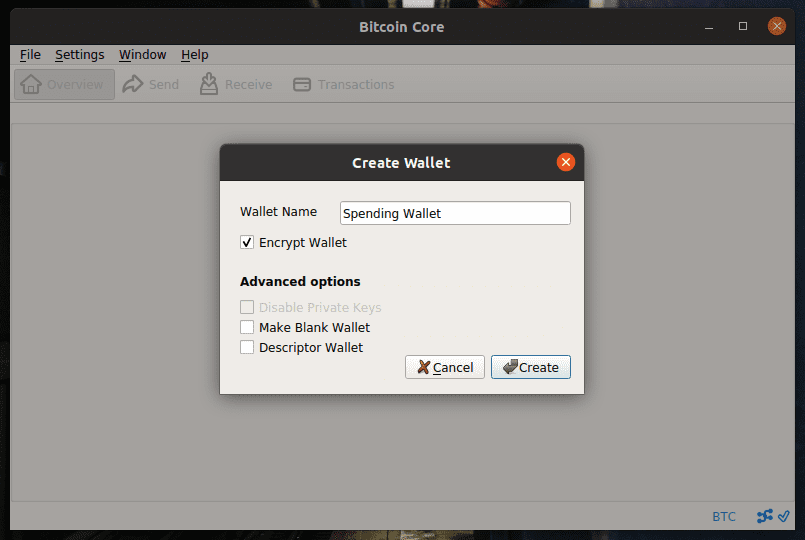 Creating a new wallet in Bitcoin Core. It takes seconds and requires almost no effort.
Creating a new wallet in Bitcoin Core. It takes seconds and requires almost no effort.Creating a new wallet in Bitcoin Core.
It will prompt you for a wallet password (required to decrypt the wallet in the future). Back up this password somewhere safe outside of the computer, as no one can recover it for you if your PC is lost or stolen.
Malware Advisory: Please be wary of the risk that malware could steal your coins. Avoid all websites or apps that are likely to contain malware (anything that is illegitimate or shady). You are significantly safer on Linux or Mac OS than you are on Windows. If you don’t have or don’t want to use a Mac or Linux machine, then set up your wallet on a computer that is not used for anything else (especially nothing online).
Read and click through the rest of the prompts carefully. Create a strong password that you don’t use for anything else. Next, go back to the ‘File’ menu and click ‘Backup Wallet’. It will bring up a prompt in which you will choose where to save the wallet file. You can save a copy to multiple USB drives if you wish. Backing up your wallet is essential and it can’t wait. Make time to do it now.
This type of wallet interacts directly with the blockchain instead of going through a ‘light wallet’ provider. This enhances your privacy and security by avoiding the use of a middleman. Your transactions will also be faster.
Also Read: How to recover a lost walllet.
How To Send Bitcoin
If you want to send Bitcoin to someone, you can send a fraction of a coin, for example: 0.001 BTC. BTC is the currency symbol for Bitcoin. Go to the ‘Send’ tab and you will see ‘Pay To’, ‘Label’ and ‘Amount’ fields among others. Paste the recipient’s address into the ‘Pay To’ field. The ‘Label’ field can be left blank, however you can use it to enter the recipient’s name for your convenience.
The ‘Amount’ field contains the amount in BTC you will send in this transaction. Only check the ‘subtract fee from amount’ option if you have to for some reason. I don’t recommend it because you will end up sending less than the amount intended (because the fee will be deducted from the amount the recipient receives, thereby shorting the recipient.
Never send Bitcoin to anyone if they promise to send you more in return. That is a scam.
You don’t need to adjust transaction fees just yet. Get comfortable with the wallet app first and learn as much as you can about how it works. The fee options shown will come in handy if you’re willing to spend extra to make your transaction go through faster.
If you don’t have enough disk space and would rather not upgrade your hard drive, you can use a ‘light’ wallet which is assisted by an external node. The wallet creation process in these wallet apps is very similar and you’ll know what to do after reading this article.
How To Receive Bitcoins
You can receive Bitcoins with your new wallet by clicking the ‘Receive’ button and then click ‘Create new receiving address’. This will bring up a dialog with a QR code containing your address, which the sender can scan with their phone.
The prompt will also contain the text format of your wallet address — this format is what you would copy and send to the recipient via email or an instant message. If the recipient isn’t physically present to scan the QR code, simply click ‘Copy Address’ and then paste it in an email or chat so they can send you your coins.
Create A Bitcoin Wallet Without Downloading The Blockchain
You can create a Bitcoin wallet without downloading the blockchain. However, you’ll have to go through a third-party wallet provider. I would recommend reading the first wallet creation section above to understand what the trade offs are. If you lack bandwidth or disk space, you may need a light wallet. For this example we’ll use Bither, which is available on both Windows and Linux.
Launch Bither and click ‘New’. Select ‘1’ and ‘xrandom’ if they aren’t already and click ‘OK’. When it prompts you to, enter a strong password you don’t use for anything else. After you exit that prompt, it will bring up a large blank window in which your mouse movements appear to draw a random pattern on the screen. This provides the program with a source of random input to help you generate unique keys.
After you click out of that window, you should see Bither load your new wallet!
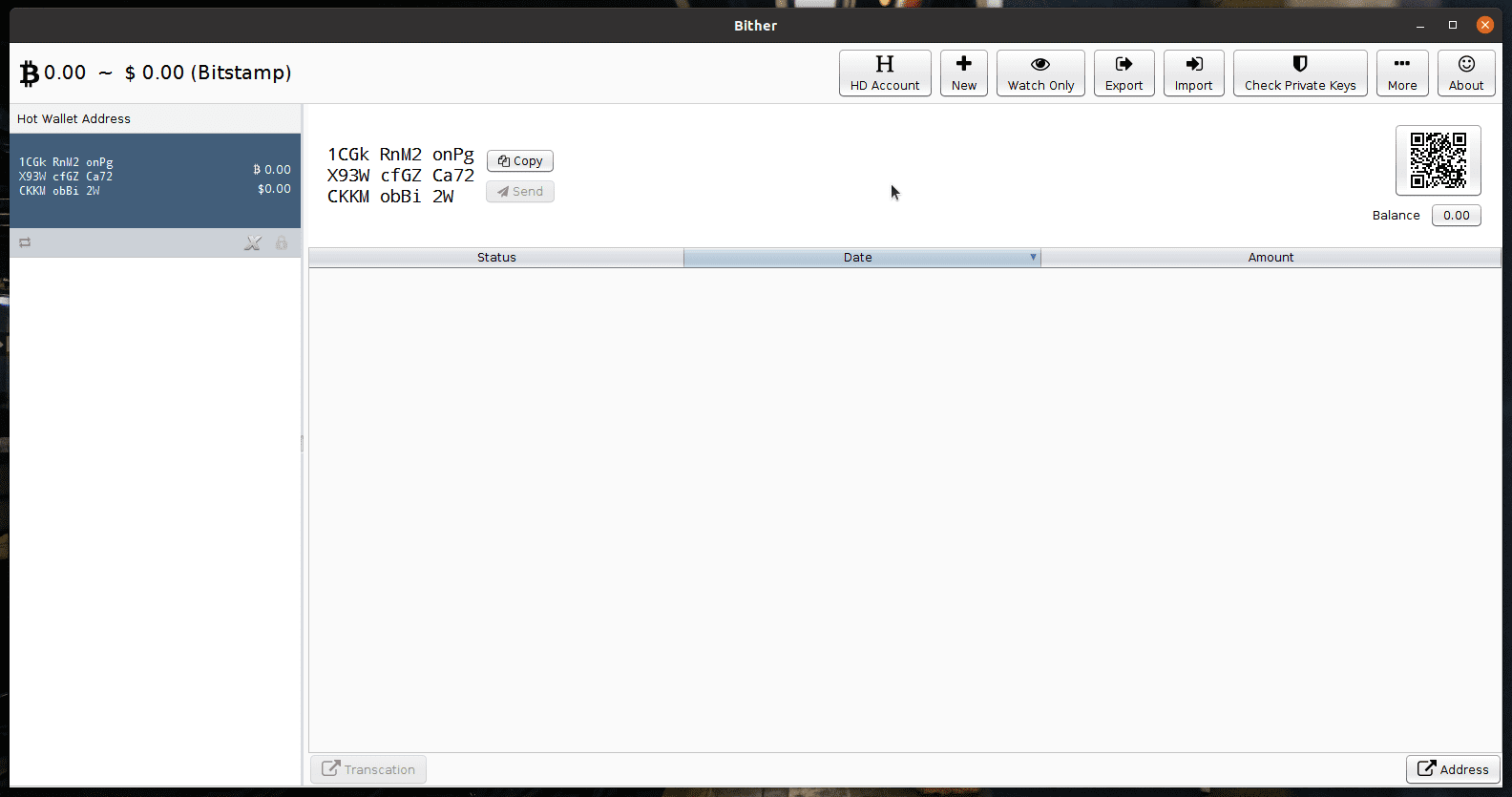 Nothing to see here, this isn’t my wallet. Just one I created for this tutorial.
Nothing to see here, this isn’t my wallet. Just one I created for this tutorial.The next crucial step is to make a backup copy of your wallet. Click ‘Export‘, then ‘Private Key Text‘. Remember that your private key provides full access to your wallet. Never send it to anyone. Enter your password when prompted and it will display a long string of characters under a heading called ‘Private Key Text’.
Ensure there are no people or cameras in the room when you are setting up the wallet. They may obtain your private key and steal all of your funds.
Copy those characters into a text file and stow them away safely outside of your computer, in case your computer is lost, stolen, or malfunctions. Also check up on your backup drive. You can also write down the private key on a piece of paper.
To receive Bitcoin, click ‘Copy’ and it will copy your wallet address to the clipboard, then paste the address in an email or message to the person paying you. To send Bitcoin, click the ‘Send’ button.
Create A Bitcoin Wallet With An Exchange
You can sign up with an exchange or custodian such as Coinbase, Binance, Coinspot (for Australians), Kraken, and the list goes on. An exchange account provides the convenience of easily exchanging your Bitcoins for other currencies and you can access the wallet from anywhere by simply logging in.
However, the security risks of exchanges is significant, as they are targeted by hackers due to the fact that they store thousands of customers’ coins on their servers. Hacks are occurring even with 2FA enabled. However, avoiding SMS 2FA and using app-based 2FA such as Google Authenticator or RedHat’s FreeOTP is very helpful.
Conventional exchange users are also subject to censorship because the exchange has control over your coins and transactions. Your coins may also be seized by the exchange. If you need to sell your Bitcoin or buy some, create an exchange account and withdraw your cryptocurrency from it right after you’re done trading it. Avoid leaving any funds on exchanges.
An exchange is not designed for transactions — although some (such as Coinbase) allow you to use them as a payment method. Please also be wary of the risk of KYC data theft. KYC data such as government IDs and other sensitive details used for verification at banks is used for identity theft. Exchanges will ask you for KYC data if you try to withdraw to or from your bank account or do any other fiat currency to cryptocurrency trades.
Create A Bitcoin Wallet On Your Phone
I do not recommend creating a Bitcoin wallet on your phone or tablet due to the high risk of phone loss or theft. However, if you have to: please be wary of the high malware and overall theft risk associated with it.
- Always lock your mobile wallet app with a pin. You can enable this in the app’s settings.
- Always lock the phone itself with a strong password in addition to locking the wallet app.
- If possible, set the wallet up on a phone you don’t use for anything else (which has been factory reset).
To create a mobile wallet, you can install Edge or Bither on either iOS or Android, or Bitcoin Wallet if you’re on Android. Launch Bither and tap the large plus sign in the bottom left corner of the screen and choose either the ‘HD’ or ‘Other’ key options. Any one of them will do.
Follow the on-screen instructions to create the wallet, allow Bither to finish scanning the blockchain and ensure that you back up your wallet’s seed phrase after you create it. You need the seed phrase to recover the wallet if your phone is lost or stolen.
Donate Bitcoin
Or copy and paste: bc1q7rj5kd9u3vktfngxg58u3z9eujfy42pe7pe7wy





